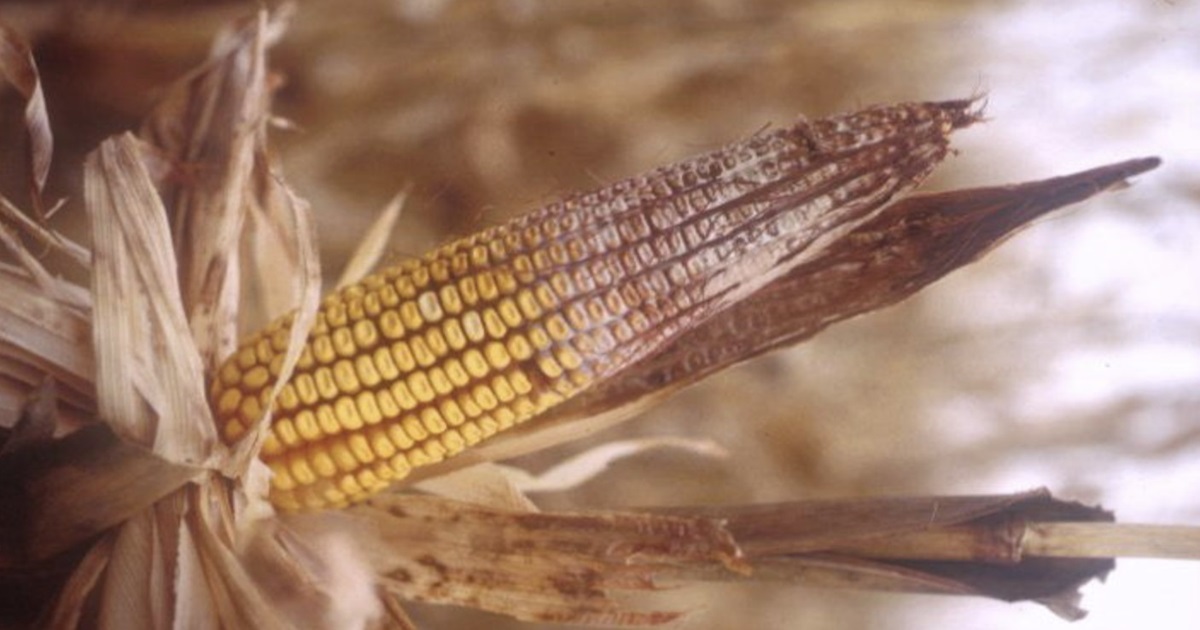What Are those Reddish-Pink Ends on the End of Your Corn?

source: Crop Science
I love corn, and I mean love it. It doesn’t matter if it’s boiled, grilled, or popped—I’m there! My husband, bless his heart, knows about my corn craze and always makes sure we’re stocked up. Thanks, honey! Honestly, there’s barely anything that can dampen my enthusiasm for these golden kernels. However, there’s just one thing that really puts me off: spotting those dreaded reddish-pink ends on my beloved corn. The sight alone makes my stomach turn. I remember my grandma always said it’s a big no-no to eat corn that looks like that. And, as it turns out, she had a very good reason for that.
Gibberella Ear Rot, the Corn Mold Menace
So, what’s the deal with these off-putting reddish-pink ends? It’s all about a specific kind of corn mold known as Gibberella Ear Rot (or Red Ear Rot), caused by the sneaky fungus Gibberella zeae. This isn’t your garden-variety mold; it’s something that can make your corn go from a delicious treat to a complete no-go.

How Gibberella Ear Rot Shows Up
This particular mold tends to start its invasion toward the top of the ear of corn and works its way down as it spreads. When corn is hit by this mold, the kernels often become mushy or shriveled. It’s a sad sight for any corn lover: instead of bright, plump kernels, you’re met with a disheartening, moldy mess.
The Conditions That Invite the Mold
You might wonder how this uninvited guest finds its way onto your corn. Well, it thrives during extended periods of wet weather. Rainy seasons can be tough on crops, and when it comes to corn, they provide the perfect conditions for Gibberella Ear Rot to flourish.

Is it Safe to Eat it?
Now, here’s a crucial bit: can you eat corn that has this mold? The straightforward answer is no. Consuming moldy corn can be harmful, as the mold can produce mycotoxins, which are toxic substances harmful to humans and animals. So, if you see that reddish-pink sign, it’s time to say bye to that corn.
How to Avoid Moldy Corn
Given the potential risks, avoiding moldy corn becomes a priority. But how can you steer clear of Gibberella Ear Rot on your next grocery trip? Here are a few tips to keep in mind:
Look for a Strong Husk and Ear
When picking corn, the husk is your first line of defense. You’ll want to look for corn with a husk that’s green and tightly wrapped around the ear. This not only indicates freshness but also provides a barrier against mold. The ear itself should feel firm and full, with kernels that run all the way to the tip.

Check for Discoloration and Damage
Keep an eye out for any signs of discoloration or damage on the husk. If you notice spots that are unusually dark or if the husk looks like it’s been breached, it’s a good indicator that the corn might be compromised. Also, if the silk (the hair-like strands at the top of the ear) is dark or feels slimy, it’s a no-go.
Trust Your Nose
Sometimes, your sense of smell can be your best tool. Fresh corn should smell sweet and, well, corny. If you detect any off or musty odors, that’s a red flag that mold could be present.
Storage Matters
Once you bring your corn home, how you store it can make a difference. Keep it in the refrigerator with the husk on, which helps retain moisture and freshness. If you’re not planning to eat the corn within a few days, consider blanching and freezing it to preserve its quality.

When in Doubt, Toss It Out
If you’ve brought home corn and later discover signs of mold, it’s best to err on the side of caution and dispose of it. No dish is worth the risk of getting sick.
Corn is a big part of what a lot of us eat and there’s so much to love about it. It can be cooked in so many ways, it’s sweet, and nothing beats the feeling of chomping down on a juicy cob. But, we’ve got to keep an eye out for this thing called Gibberella Ear Rot.
By knowing what to look for and how to choose the best ears of corn, you can continue to enjoy this delightful grain without worry. I know I’ll be extra careful! And shoutout to my grandma who warned me about this a long time ago. Love you!